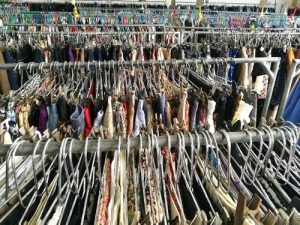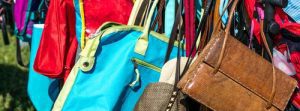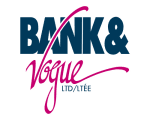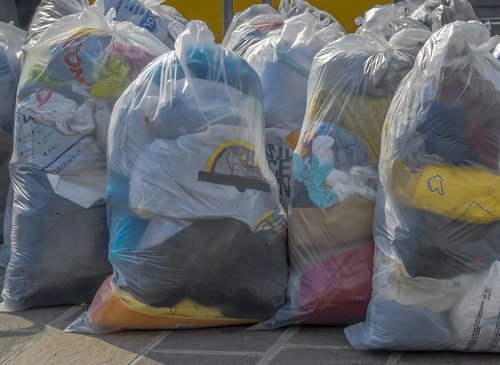In early November 2017, Emily Farra of Vogue Magazine reported that even those in the high fashion industry see the value in the used clothing market particularly as it relates to the environment. “If you’re concerned with the billions of brand-new clothing items being produced each year (and you most definitely should be), you can lower your carbon footprint by wearing and re-wearing clothes that already exist,” she argues. While recycling materials is an important environmental act, those in the business of repurposing materials remind us that before giving old items new meaning, it is important to verify the grade of material re-entering the market for consumption. Those with expertise in credential clothing argue that while buyers might think that all recycled clothing is of credential grade, this is an assumption and might not always be the case.
What is Credential Clothing?
The term “credential clothing” is also another insider industry term used to refer to “original clothing donation,” which may also include shoes and miscellaneous textiles. Credential materials are initially collected in drop boxes and donation centers which are placed throughout different communities — especially in middle to affluent neighbourhoods. These materials are not only donated, but in order to qualify as credential they must be unsorted, untouched, not graded in terms of their quality, in the exact condition in which the material was first deposited, and in their original packing bags. No trash is to be included in these packages. Once they are collected, they are later processed and recycled as top-grade credential materials.


Why does Credential Clothing have a Higher Value?
One of the reasons credential clothing is considered of a higher quality and grade, and therefore much preferred by thrift stores, is because it is inside bags which have not been opened. Credential clothing bags often contain: vintage and highly sought-after items, jewelry and other accessories such as hats, belts and scarves, shoes (both leisure/informal and formal), carrying items such as purses, backpacks and wallets, hats, materials for children such as toys and stuffed animals, and household linens.
Thrift stores and distributors then sort through these materials and know how to select top grade items of clothing, shoes (which have a higher value), and valuable vintage items, and then sell them individually at a higher price. The problem with items that have been removed from bags and packaging is that the end distributor does not have the opportunity to pick out those items themselves and determine which is most valuable. Generally speaking, it is often the case that credential clothing gets a higher price at market than sorted used clothing because of packaging.


How Are Credential Materials Collected?
In most cases, credential materials are largely collected from drop boxes which have been strategically placed in high traffic, and even affluent communities where original owners determine that they no longer need their materials. In these areas, collection boxes are emptied regularly (in some places a minimum of once a week or more if need be). Drivers whose job it is to collect these materials then make sure that all the items they collect are secured in carrying materials such as plastic bags and that there is no trash or wet items included in the packages.
What Role Does Bank & Vogue Play in Collecting Credential Materials?
At Bank & Vogue, we buy credential clothing and facilitate the purchase (through supply) of wholesale credential clothing from charities and for-profit collectors across North America.
Our sellers are the first entry point to collection. In order to do so, our sellers might pick up materials via home pick-up routes, by accessing public bins located in neighbourhood drop off locations, picking up materials at in-store drop-offs and donation stations. We work simultaneously with the customer and seller to ensure that the logistics are organized, as well as shipping the product directly from the seller warehouse to the customer warehouse (or port of destination). Once you contact one of our friendly staff members to discuss pricing and logistics, we then make it our responsibility to arrange for the purchase and pickup of any materials you will be parting with.


Bank & Vogue will then begin processing credential materials to be packaged in bales or capsacks. While the product is unsorted, workers are conscious to look for and eliminate any hard items or lotions that can damage the clothing. These items, as a result, are removed from the bags. Other items such as shoes, purses and belts remain with the load.
At Bank & Vogue, we source hundreds of thousands of pounds of high-quality credential clothing annually. We are responsible for redistributing credential cloth domestically as well as internationally. In order to ship the materials, we typically arrange full 53-foot trailer loads for the domestic market and 40-foot high-cube ocean containers for export. The weights for these containers vary depending on the packaging and loading needs. It is typically the case that loose credential clothing has a minimum weight of 25,000 – 30,000 pounds. Alternatively, baled credential clothing has a minimum target weight of 40,000 pounds.
As a result of supplying and facilitating the sales of bulk used clothing, we are very familiar with both sides of the business – that is, buying and selling credential materials. Due to this familiarity, Bank & Vogue has also amassed experience in the logistics that are involved and required in order to move these goods across North America and through worldwide markets. Contact us today to find out what we can do for you.








